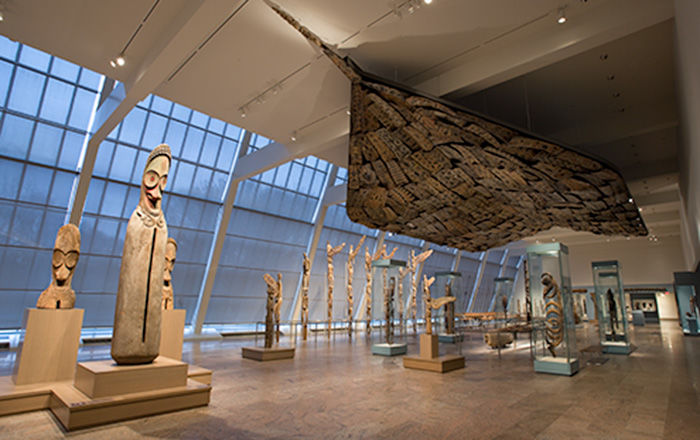Female portrait lü me (figure in wood)
A lü me was typically commissioned by a man of standing in honor of a favorite wife. The subject’s distinguishing traits, including her facial features, cicatrices, and braided coiffure, would be captured by the artist through direct observation. The unveiling of a completed figure was celebrated with lavish feasting sponsored by its patron. Named for their subjects and stored in special baskets, such portraits were subsequently displayed on special occasions.
This example was carved by celebrated early 20th century carver, Zlan of Belewale, and his wife, Sonzlanwan. Zlan’s calling was revealed to him as an adolescent through the miraculous appearance of his signature tool, an adze, falling from the branches of an oil palm. The sculptor honed his skills on soft tuber roots and soapstone before his mastery of wood earned him the name Zlan (sometimes spelled Sra), meaning "creator" or "god." As the most sought-after Dan artist of the first half of the twentieth century, Zlan mentored scores of apprentices. Many of these trainees were sent by regional chiefs to acquire his expertise for their own communities. Through his efforts, the small Wè village of Belewale—where his father had also been a sculptor—became an important carving center. Zlan’s works, including masks, ladles, and figurative portraits, have been collected globally.
Defying the convention that woodcarving was a man’s vocation, Sonzlanwon (literally, "a snail, if god agrees") collaborated with her husband on many of his greatest works. She accompanied him on commissions for important patrons—the intense concentration required to execute these was such that they often worked side by side in seclusion. Sonzlanwon is credited with blocking out Zlan’s works’ initial form, using wood felled by his apprentices. Following his refinement of the contours, she handled final detailing, including the braided raffia-palm coiffures added to figures and ladles. As Zlan aged, it is believed that Sonzlanwon’s role in their collaboration expanded. Documentation of her contributions derives from interviews conducted by German anthropologist Hans Himmelheber shortly before Zlan’s death, as well as from remembrances of surviving relatives and acquaintances.
This image cannot be enlarged, viewed at full screen, or downloaded.

